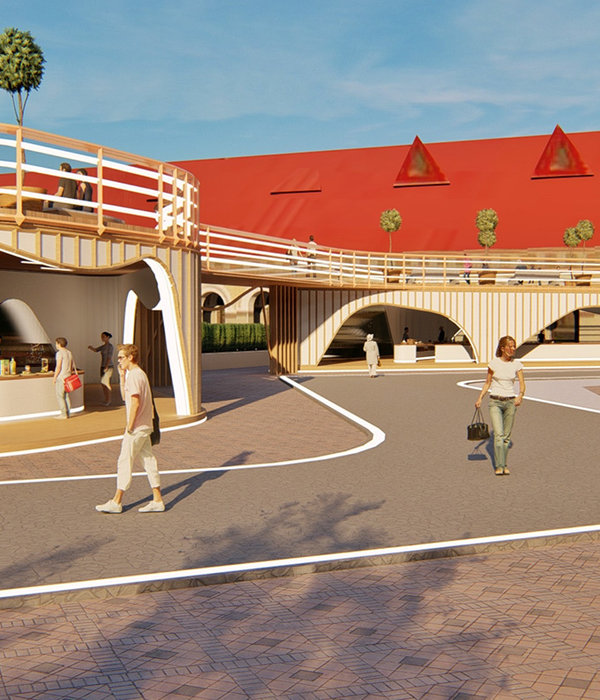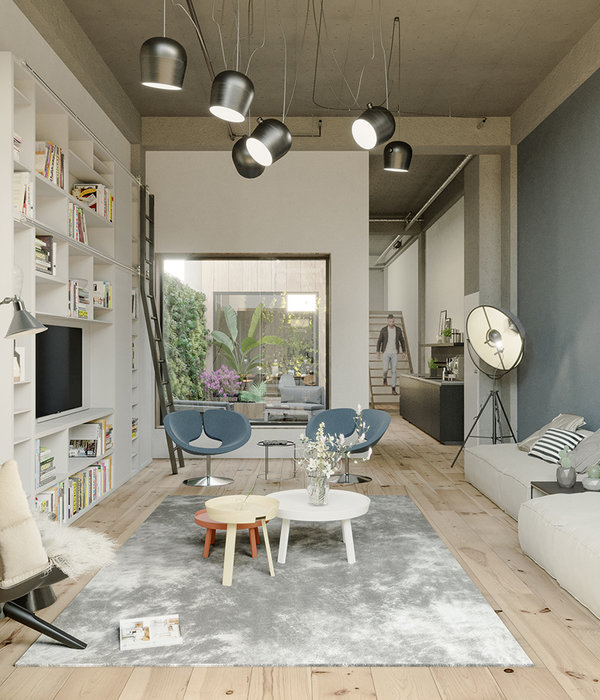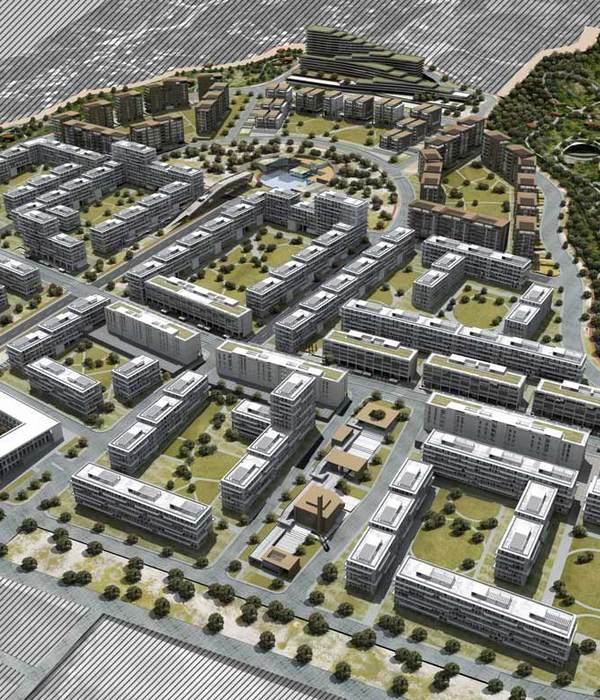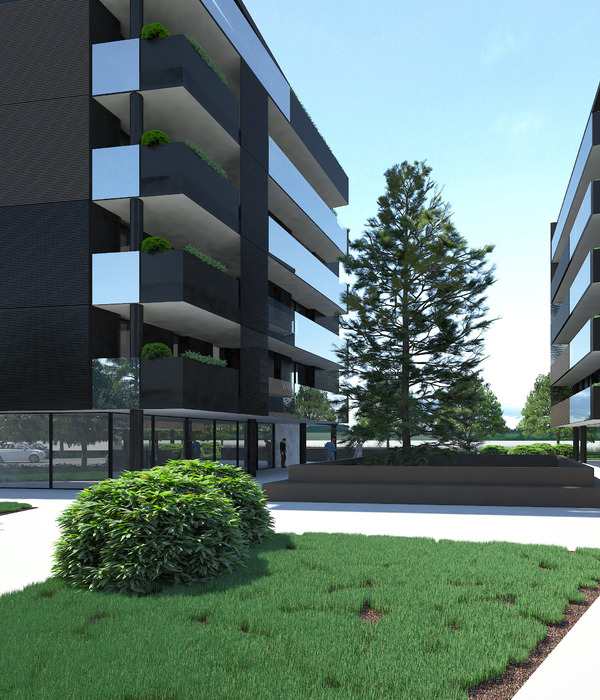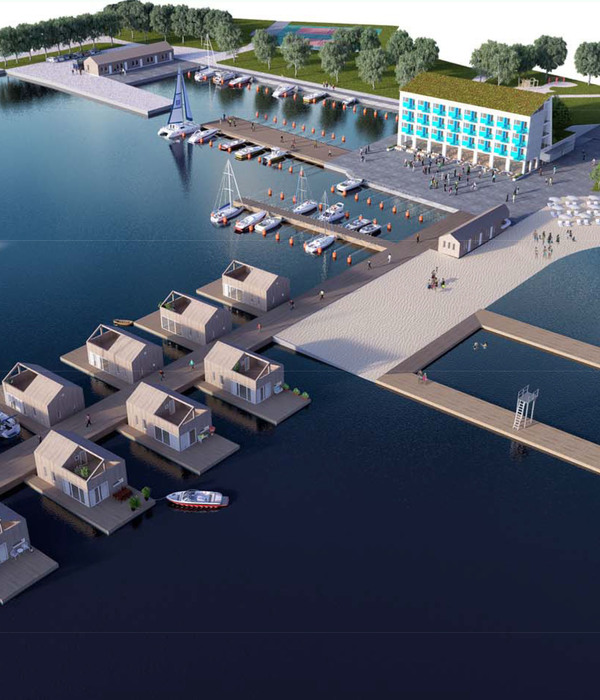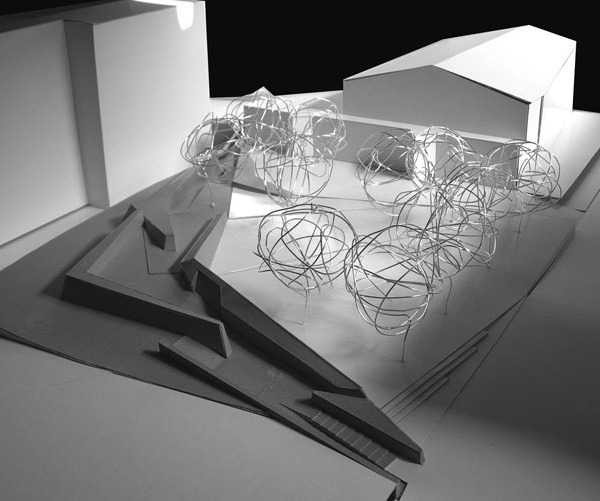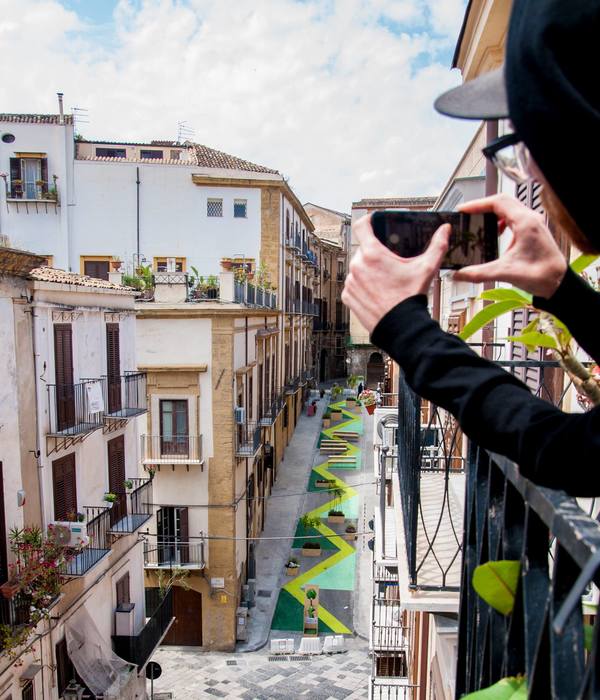- 项目名称:阿尔巴尼亚地毯广场 (Albanian Carpet)
- 地点:阿尔巴尼亚,希罗卡 (Shiroka,Albania)
- 面积:30000 平方米
- 建筑事务所:Casanova + Hernandez Architects
- 项目负责人:Jesus Hernandez Mayor
- 摄影:Ergys Zhabjaku,Jesus Hernandez Mayor,Orestia Kapidani
Casanova+Hernandez:希罗卡渔村,位于与黑山接壤的斯库台湖岸边。几个世纪以来,这里的居民都住在湖边,男人用小划艇捕鱼,女人负责照料果园,编织地毯。后来随着剥夺公民传统”私人”活动的共产主义政权的终结,人们普遍开始对公共领域不信任,从而形成了一个肆意占领和私有化公共空间的特殊时期。由此,希罗卡滨水区的公共空间被私人住宅、餐馆、私人停车场和售货亭等各种非法建筑所占据。“Albanian Carpet (阿尔巴尼亚地毯)”项目旨在将滨水区归还给市民,拆除非法建筑,开放湖景,打造一个有家庭特色的活跃公共空间。
Casanova+Hernandez:Shiroka is a fishing village located on the shores of Shkodra Lake, near the border with Montenegro. Its inhabitants lived for centuries from the lake, men fishing with small rowboats and women tending orchards and weaving carpets by hand. The reaction to the end of a communist regime that had deprived citizens of living from traditional “private” activities was widespread mistrust in the public sphere, which led to a period characterized by uncontrolled occupation and privatization of public space. As result, the public space of the waterfront of Shkodra lake was occupied with illegal constructions such as private houses, restaurants, private parking areas, and kiosks. “Albanian Carpet” returns the waterfront to the citizens demolishing the illegal constructions, opening the views over the lake, and creating an alive public space with a domestic character.
“Albanian Carpet”不仅旨在物理和功能上恢复希罗卡海滨区,更要重建人们对公共空间的归属感和依恋感。它就好像一个由不同的开放房间组成的大房子,设计灵感来自传统的阿尔巴尼亚房间(ODA),其特色就在于长而低的U形长凳,每个人都可以在这里就座、躺下甚至是睡觉。这些空间不仅打开了人们面向湖面的视野,更激发了市民参与不同形式的互动,包括游乐场、野餐室、休息室、圆形剧场和渔民室等。
The “Albanian Carpet” project not only aims to physically and functionally restore Shiroka waterfront but also to rebuild the feeling of belonging and attachment to the public space, which is conceived as a large house made of different open rooms inspired by the traditional Albanian room (ODA), characterized by a long, low U-shaped bench where family members seat, lay and even sleep. These rooms open the views over the lake and stimulate citizen’s interaction with different uses such as playground room, picnic room, lounge room, amphitheater, and the fisherman’s room.
U形空间的内侧内倾,由木材制成,而外部则由石头构成,形成台阶座位,将中心广场变成了一个临时剧院。人行道、座位和台阶上铺设的黑白花岗岩,都遵循了阿尔巴尼亚地毯的传统图案,为公共空间创造了一种独特的家庭特色。
The interior side of the U-shaped rooms is introverted and made of wood while the exterior is made of stone and forms steps for seating that transform the central square into an improvised theater. Pavement, seats, and steps are covered with black and white granite stones following the traditional pattern of the Albanian carpets, which provides a unique and domestic identity to the public space.
现有的大型树木都被保留了下来,并融入到广场的设计中,新增的开放空间也种植了新的小树,为座位和游戏区域提供荫凉。广场中心没有树木和城市元素,可举行各种公共活动。
The large existing trees are preserved and integrated into the design of the square. New small trees are planted in the open rooms to bring shadows to the seating and playing areas. The center of the square has been kept free of trees and urban elements to allow public events.
Shirroka的滨水区被改造成了一个面向行人的广场,最大限度地减少汽车的流通和进入。整个村庄的中轴线都被改造成了共享人行道,村口为游客新建了一个停车场,鼓励大家步行游览村庄。
The waterfront of Shiroka is transformed into a pedestrian-oriented square, minimizing the circulation and presence of cars. The whole central axis of the entire village is transformed into a share-pavement area. A new parking for visitors at the entrance of the village encourages the visit of the village by foot.
▼主广场平面 Main Square Plan.
▼广场基础设施 Urban Element.
项目名称:阿尔巴尼亚地毯广场
地点:阿尔巴尼亚,希罗卡
面积:30000 平方米
完成:2020年
建筑事务所:Casanova + Hernandez Architects
项目负责人:Jesus Hernandez Mayor
项目建筑师/合伙人:Helena Casanova
工程:Sphaera
摄影:Ergys Zhabjaku, Jesus Hernandez Mayor, Orestia Kapidani
Project: Albanian Carpet
Location: Shiroka, Albania
Area: 30000 m²
Year: 2020
Architects: Casanova + Hernandez Architects
Project Leader: Jesus Hernandez Mayor
Project Architect / Partner: Helena Casanova
Engineering: Sphaera
Photographs: Ergys Zhabjaku, Jesus Hernandez Mayor, Orestia Kapidani
{{item.text_origin}}



